Some thoughts on PLAY
A Wildcard newsletter, where I play a little with both ideas and approach
On this chilly weekend in January, as I am wrapping up a Winter-intensive undergraduate seminar course on social and personality development, I am reflecting on a topic we discussed in depth. That topic is PLAY.
This post is a little bit “meta” — it’s me “playing” with how to present ideas. And the idea I am playing with presenting today is play. Oh, what fun!
We don’t always think about this word — PLAY — but it’s worth taking a moment to do so. I think most folks understand that play-time is important for kids. It is also possible that folks underestimate just how important it is, but that’s not the topic of this newsletter. Rather, let’s take that point as given: Play is super important!
That said, today’s topic is about considering the ecology of play — what “counts” as play? And what constitutes “high quality” play? In an era of hyper-focus and judgement, a little guide on matters of play might be welcome? It is my hope that the content that follows is freeing by way of broadening your point of view on matters of play.
We often use the word play as if it’s a noun — something to have or not have. But PLAY is a verb — it’s an activity. It’s an activity wherein you seek out the room to move or where you look for the give. Play occurs in moments of time where you break away from routine and do something different. Play is spontaneous and fun.
Play gets some of it’s power from fun — another word we often gloss over. Everyone knows what fun is, right?
Right?
But do we? Fun does have a facet of subjectivity, but there’s an objective angle too. Author and game designer Dr. Ian Bogost reminds us of this by stating that fun is an experience of discovery! A moment when you are surprised, or where you gain a new point of view.
See Bogost discus his counterintuitive “secret” to fun here.
When we put these definitions of PLAY and FUN together we not only see their power, but we see the activities in a new light. What’s important for us all, but imperative for children, is having as many moments as possible to …
Break away from routine and find some “room to move”
Seek out “the give” with materials or toys, or tools — whatever is laying around. You can play with anything.
Generate surprise, find a new point of view, and stumble upon an unexpected outcome.
Play is the act that creates moments of fun.
These moments feed autonomy - a powerful facet to motivation. These moments teach us important “can-do” lessons too. Play is where discoveries happen, no matter our age. The moments and materials we engage with in “play sessions” can afford “growth moments” - what psychologists call “proximal processes.” Not all play sessions are created equally, thus not all proximal process occurring within these moments are positive. But play mirrors the world we live in, and not all aspects of our world are positive either. Interesting that Bogost’s definition of “fun” doesn’t presume positivity. Sometimes gaining a new point of view can throw you for a loop, but those moments are of value, too.
Play occurs in the world — a world made up of a complex ecology — in the communities and spaces we inhabit. The spaces we inhabit are a varied blend of the natural world and the constructed world. We interact with organic and human-made materials. We interact in real and in virtual spaces. Play then happens in real and virtual spaces, with organic and human-made materials. Play doesn’t require “toys” though humans have made toys probably “always,” given that remnants of toys can be found all across the archeological record. Toys are tokens that come from humans “playing” with materials. This creates a dynamic cyclical process: play with materials creates a toy, and then the toy is “played with” and the cycle continues.
This dynamic process is worth thinking about: play does not require toys, but toys are a part of play. Play is situated in our varied human ecology — play happens in spaces and with things. But play breaks away from reality too. There is no “right” way to play. Children don’t need a lot of toys. But they do need time and space to break way from routines and seek out new perspectives and to experience joy in discovery.
In the slides that follow, I play around with these ideas, and with how to present them. With them, I present “the ecology of play” by featuring three contexts to capture that intersection of natural and human-made, or real and virtual. Play reflects the world we live in and the materials we have on hand. And I do offer some advice, by way of “food for thought” and “take-aways”.
The main take-away is this: There is no single way to play! We should strive to mix things up and keep the kinds and qualities of our play in an ongoing sort of balance. Technology play is okay! Outdoor play is okay! Playing with toys is okay!
You made it to the end — what do you think? I would love to hear from you about how you approach PLAY and FUN, whether you are a parent, a teacher, or a human being looking to enhance your experience of living. Leave a comment, ask a question, or simply click that “like button.” Your feedback matters to me.
In addition to the resources I share in the slide above, I will also point you to the excellent Substack Play Makes us Human, authored by Dr. Peter Gray - a long standing authority on matters of play and psychology.
Thanks for taking a moment to read
. If you enjoyed this newsletter, please share! If you haven’t already, please consider subscribing.




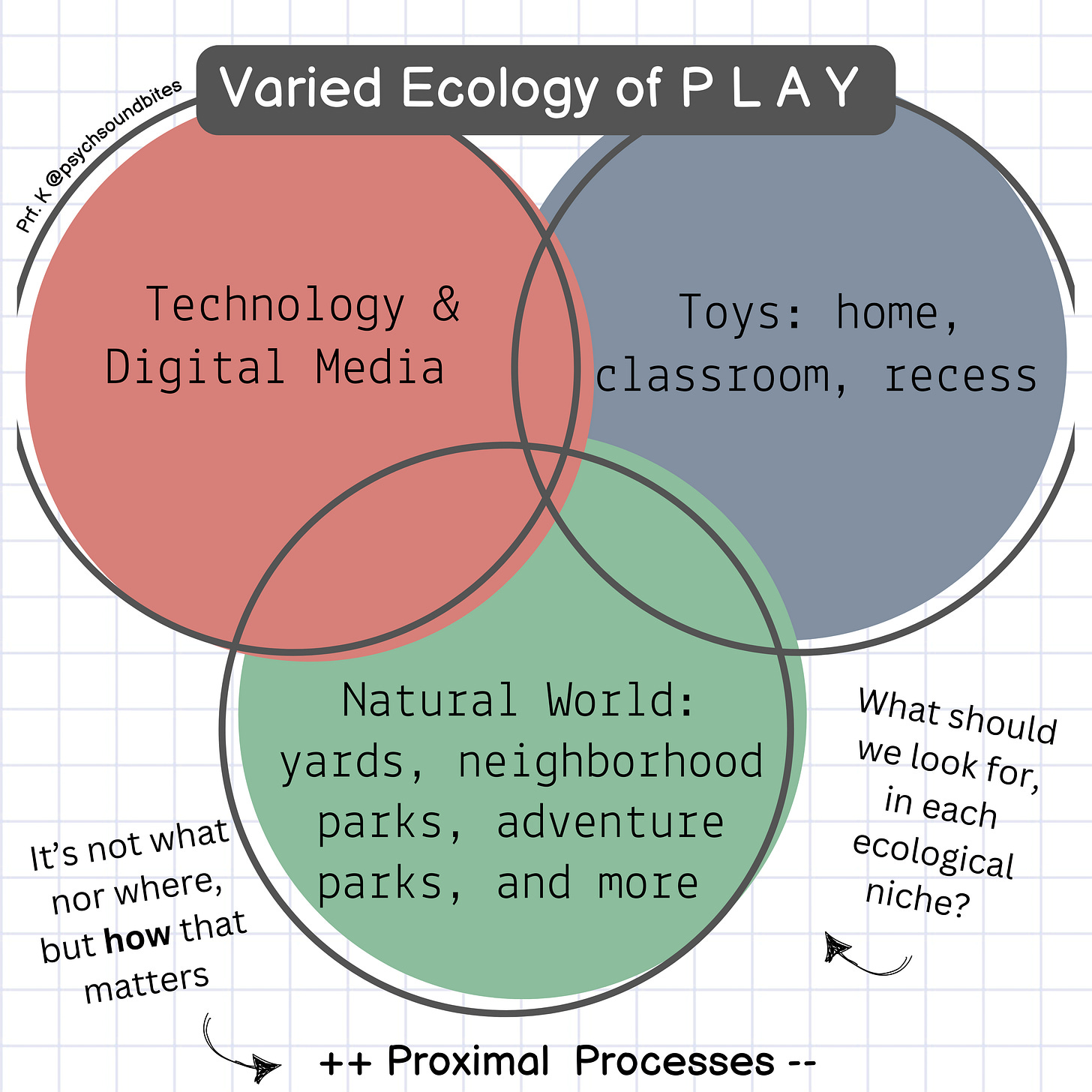
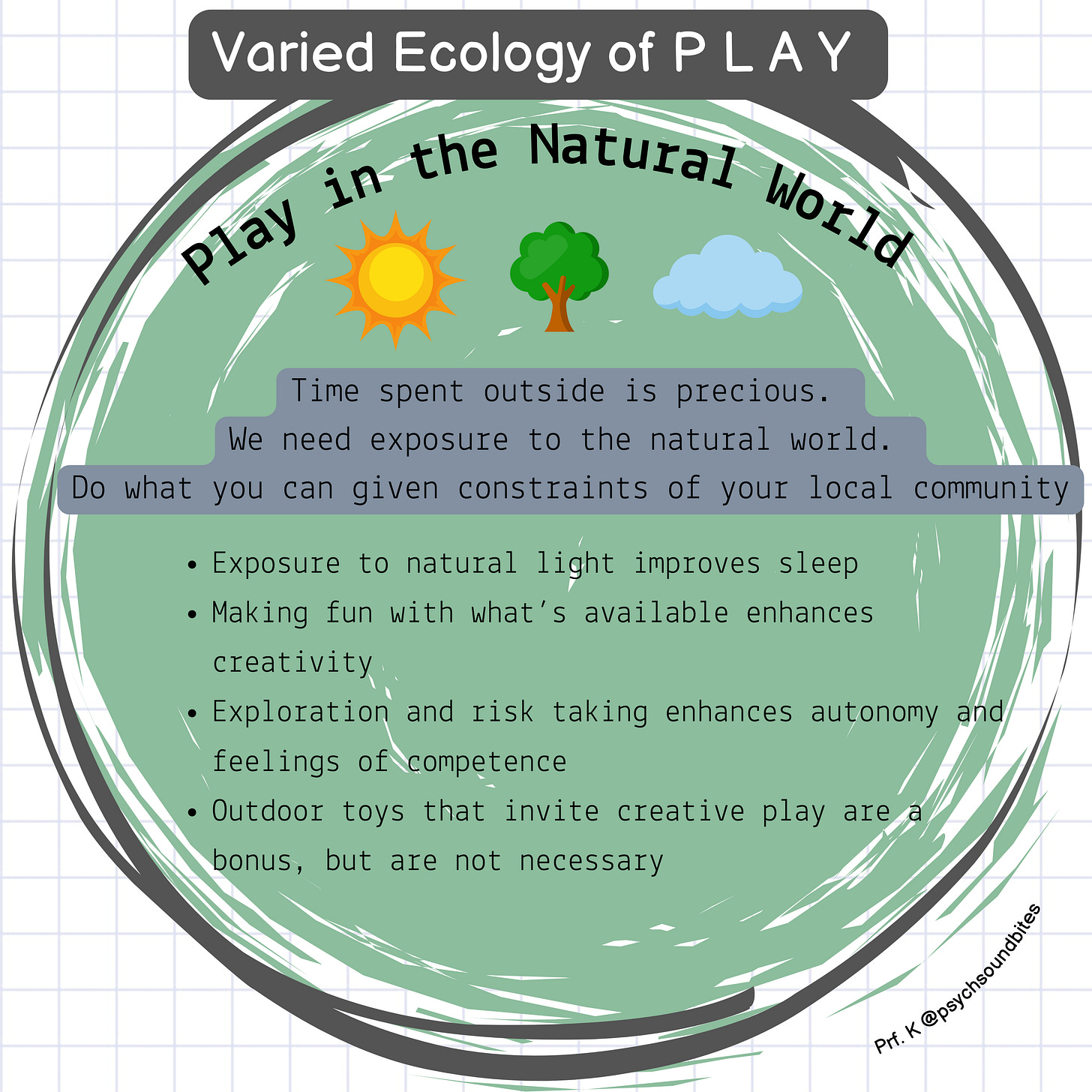
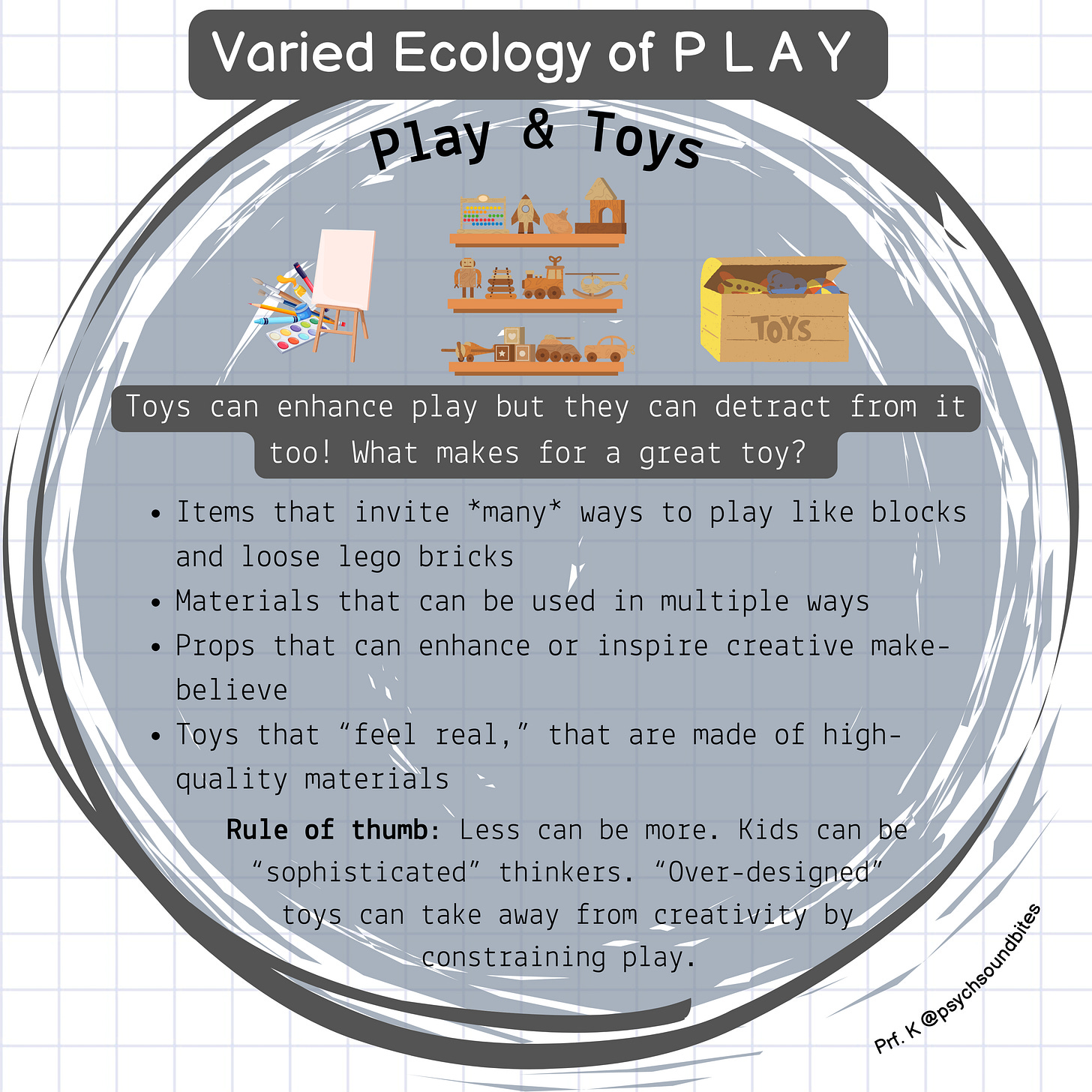
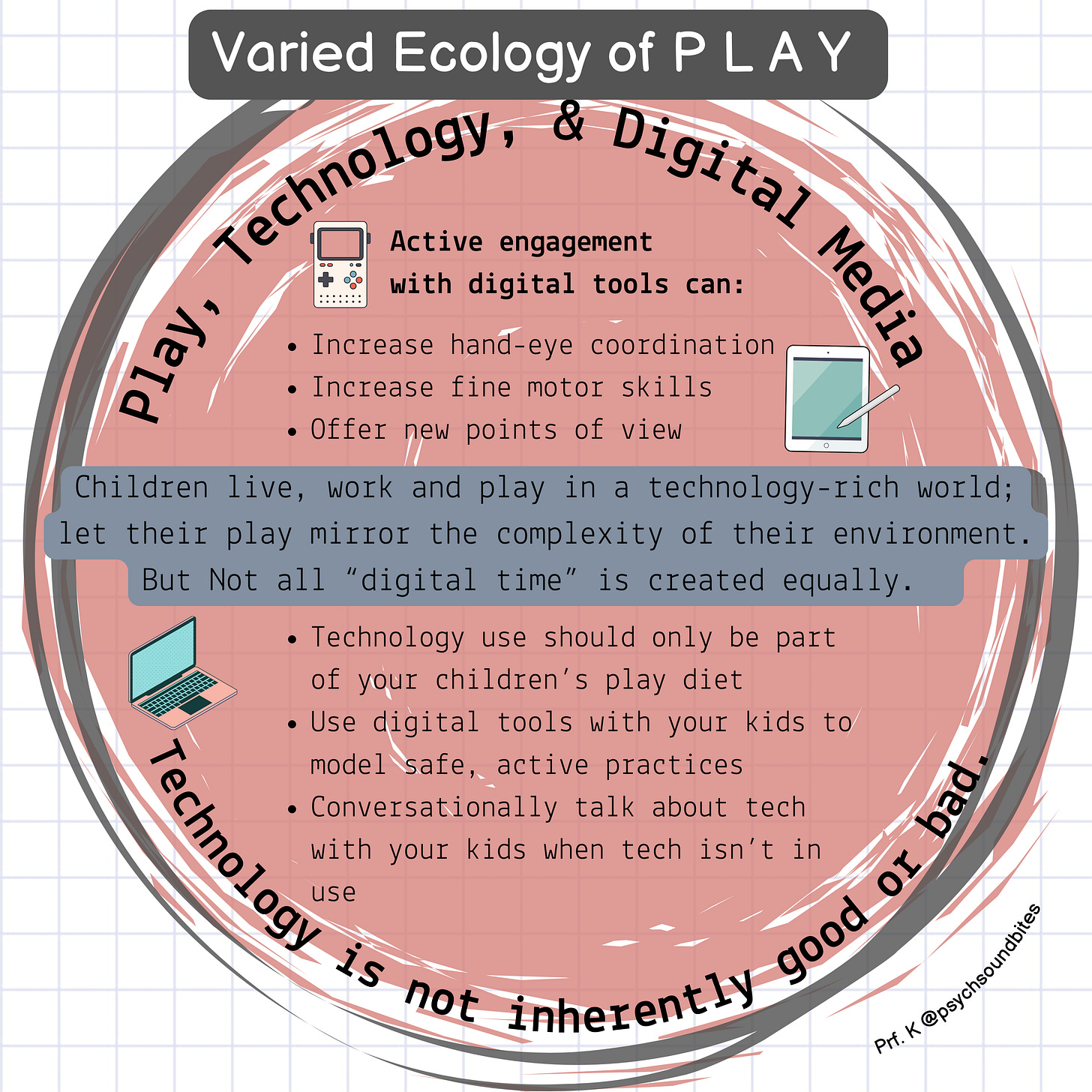
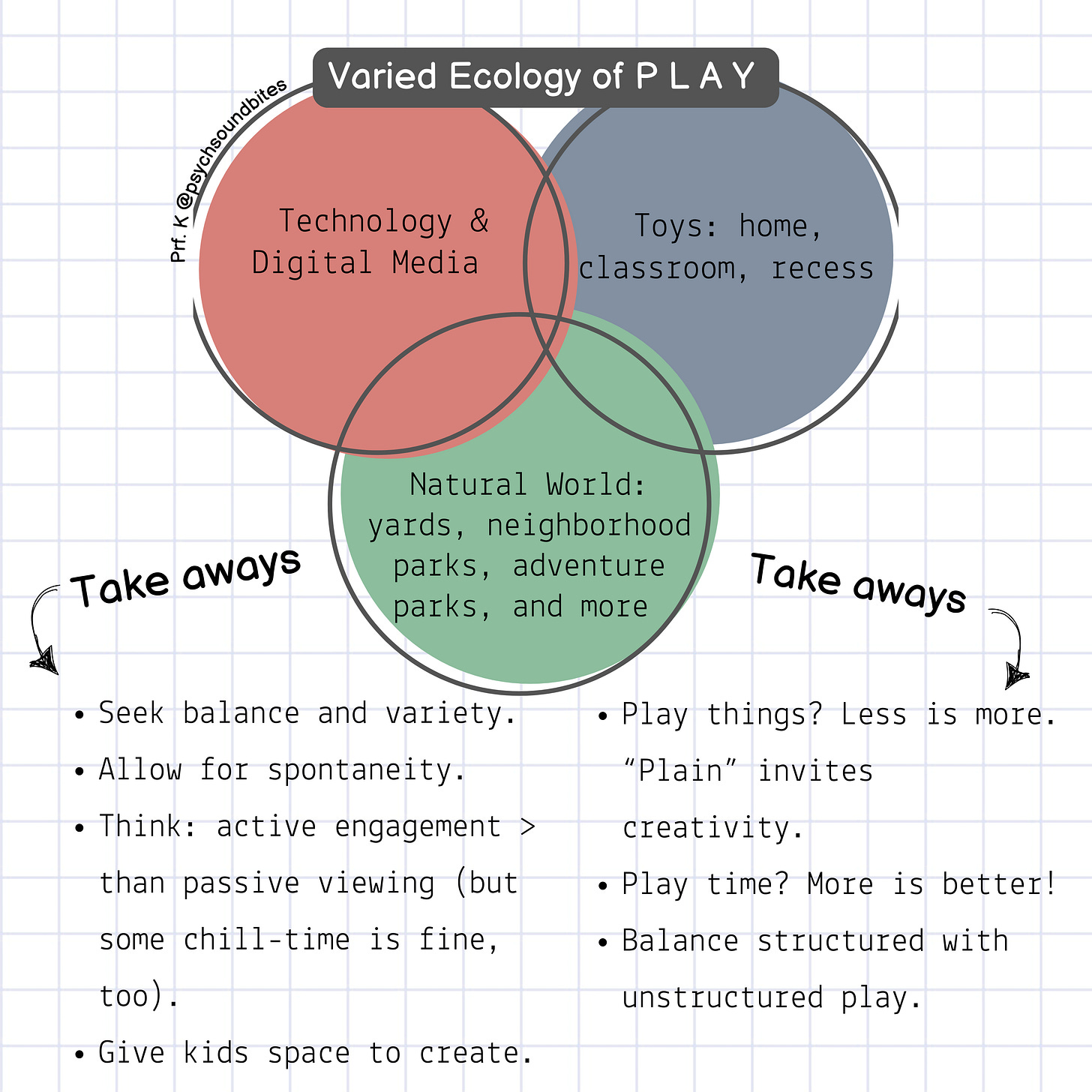

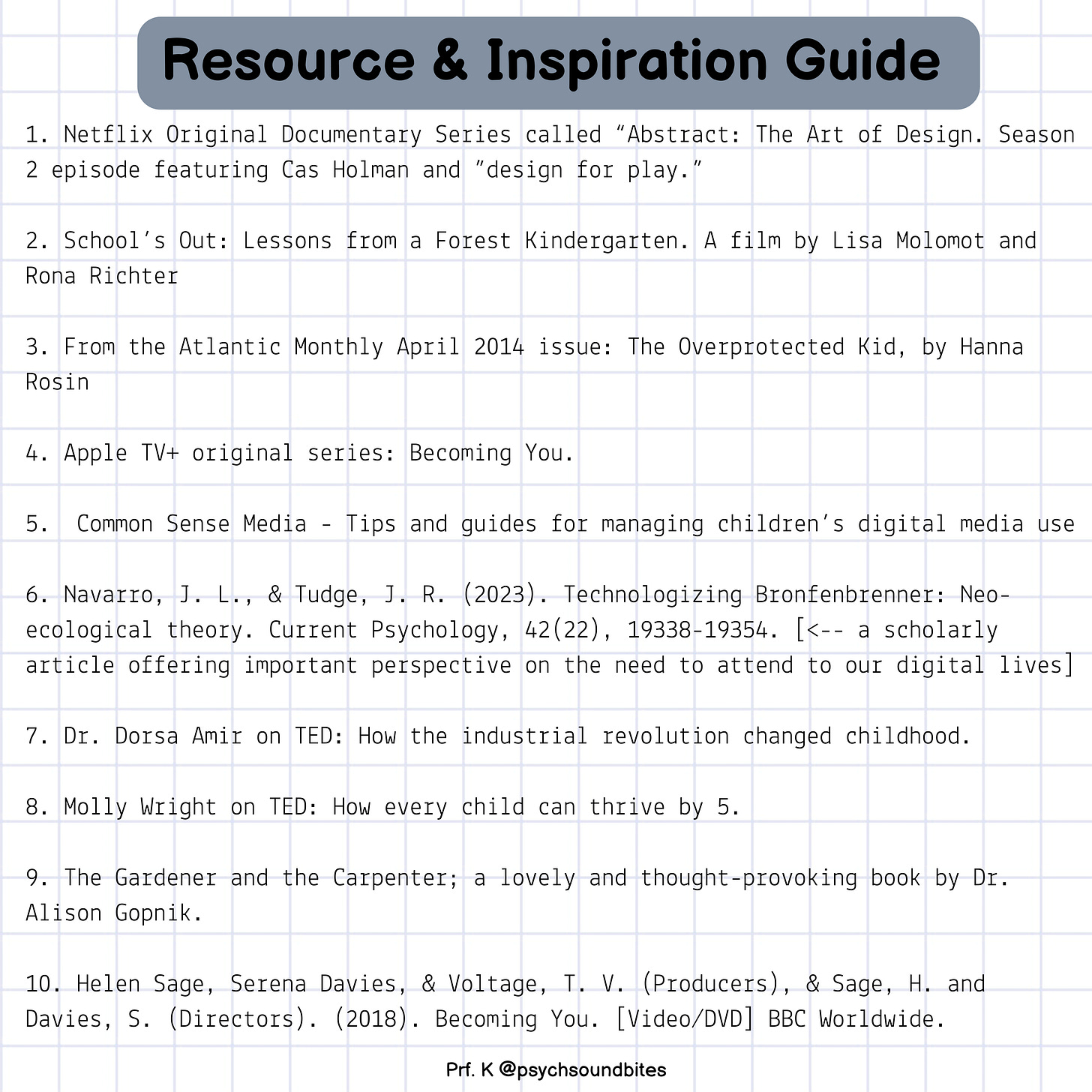
Dear Erica, thank you for your post and the beautiful design.
I like the idea of a varied ecology of play and the overlapping areas that the three concepts create.
It reminds me of the book “Finite and Infinite Games” by James Carse. I found it quite interesting - —he suggests that there are finite games we play because we want them to end, with a clear winner and loser.
Then there are infinite games, which we play because they bring joy. We don’t want them to end; we play them for the sake of playing.
Gardening comes to mind—and, of course, writing.
Thank you for sharing your infinite game with us through your writing!
Cannot be enough written on adults and play